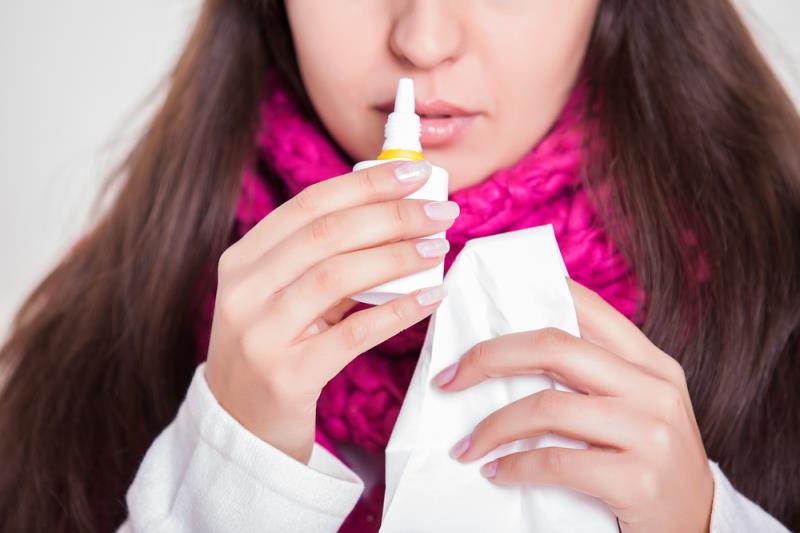Nasal as good as intramuscular glucagon for hypoglycaemia





Administering glucagon through a nasal spray device effectively manages insulin-induced hypoglycaemia episodes in diabetes mellitus patients, with the effect similar to that when treatment is administered via an intramuscular injection, according to the results of a phase III crossover study from Japan.
All patients who received glucagon via either administration route recovered from hypoglycaemia by 25 minutes after dosing (treatment difference, 0 percent, 95 percent confidence interval, −1.47 to 1.47), indicating noninferiority of the nasal glucagon. Treatment success was defined as plasma glucose increase to ≥3.9 mmol/L or ≥1.1 mmol/L increase from the nadir within half an hour post dose. [Diabetes Obes Metab 2020;22:1167-1175]
Treatment success occurred at a mean of 12.0 minutes with the nasal spray and 11.0 minutes with the injection. Glucagon was rapidly absorbed regardless of the route of administration, and PG profiles were comparable during the first 60 minutes post dose.
Drug-related treatment-emergent adverse events (TEAEs) affecting >2 patients included rhinalgia, increased blood pressure, nausea, ear pain and vomiting in the nasal group, and nausea and vomiting in the intramuscular group. TEAE profiles did not significantly differ between patients with T1DM and those with T2DM.
The study had randomized 75 patients with T1DM (n=34) or T2DM (n=41) to either nasal glucagon (NG) 3 mg or intramuscular glucagon (IMG) 1 mg approximately 5 minutes after insulin termination; the patients then received the alternative in the second treatment sequence. A total 72 patients (mean age, 50.2 years; 69.4 percent male) received ≥1 dose of study drug, and 69 completed both treatment sequences.
NG is a ready-to-use drug–device combination of a 3-mg dry glucagon powder delivered through the nasal mucosa. This formulation does not require reconstitution, injection, or patient inhalation (it is absorbed from the nasal cavity), offering an appealing needle-free alternative for treating severe hypoglycaemia occurring outside of a hospital setting. [J Diabetes Sci Technol 2015;9:38‐43; https://www.easd.org/virtualmeeting/home.html#!resources/nasal-glucagon-a-viable-alternative-to-treat-insulin-induced-hypoglycaemia-in-adults-with-type-1-diabetes-56ea02bc-7c76-40fe-a2c8-2ebd92aa0e0f]
“The goal of glucagon rescue treatment is to rapidly restore blood glucose, so a patient regains sufficient cognitive function to safely consume oral carbohydrates. The mean time to treatment success was 1 minute faster with IMG vs NG, and the difference was statistically significant,” the investigators said. “However, [the parameter] did not include time required for intramuscular glucagon reconstitution and injection preparation.
“Therefore, the difference [in time to treatment success] is not considered clinically relevant in light of the real‐world circumstances of severe hypoglycaemia,” they added.
In real‐world settings, administering a traditional injection can take longer relative to giving a puff of dry powder inside the nose, the investigators pointed out. Injection preparation can also be confusing to nonmedical caregivers, especially in a stressful situation where they are more prone to errors.
A separate user-experience study has shown that NG was simpler to use for adult volunteers and caregivers in Japan compared with IMG in the treatment of severe hypoglycaemia.
Compared with IMG, NG had a higher success rate (89.5 percent vs 26.3 percent; p<0.001) and took a shorter time to complete (23.9 vs 207.3 seconds; p<0.001) among caregivers (n=19). Likewise, among untrained individuals (n=20), 95 percent of nasal glucagon administration attempts were successful (mean time to complete administration, 55.5 seconds). [Diabetes Ther 2020;11:197-211]
All caregivers and the majority (70–80 percent) of third parties reported that NG was easy to use, and they were confident and willing to use the device in a real emergency. More than 80 percent of caregivers preferred the needle-free option.